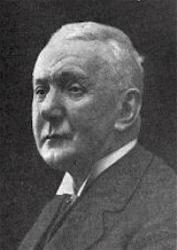Planning worship?
Check out our sister site, ZeteoSearch.org,
for 20+ additional resources related to your search.
- |
User Links
Search Results
[There is a happy land]
Appears in 3 hymnals Composer and/or Arranger: R. Jackson Incipit: 32156 57246 53321 Used With Text: Happy Land
[There is a happy land]
Happy Land
Author: Andrew Young Appears in 612 hymnals First Line: There is a happy land Used With Tune: [There is a happy land]
Happy Land
There is a happy land
Hymnal: Hymnal with Music for Children #142a (1888) Languages: English Tune Title: BRADSHAW
There is a happy land
There is a happy land
Hymnal: Hymnal with Music for Children #142a (1887) Languages: English Tune Title: BRADSHAW
There is a happy land
Happy Land
Author: Andrew Young Hymnal: Golden Rays #119 (1882) First Line: There is a happy land Languages: English Tune Title: [There is a happy land]
Happy Land
Robert Jackson

1840 - 1914 Person Name: R. Jackson Composer of "[There is a happy land]" in Golden Rays After receiving his musical training at the Royal Academy of Music, Robert Jackson (b, Oldham, Lancashire, England, 1840; d. Oldham, 1914) worked briefly as organist at St. Mark's Church, Grosvenor Square, in London. But he spent most of his life as organist at St. Peter's Church in Oldham (1868-1914), where his father had previously been organist for forty-eight years. A composer of hymn tunes, Jackson was also the conductor of the Oldham Music Society and Werneth Vocal Society.
Bert Polman
Robert Jackson
Andrew Young
1807 - 1889 Author of "Happy Land" in Golden Rays Young, Andrew, second son of David Young, for more than fifty years a most efficient teacher in Edinburgh, was born at Edinburgh, April 23, 1807. After passing through a distinguished eight years' literary and theological course at the University of Edinburgh, he was appointed in 1830, by the Town Council, Head Master of Niddry Street School, Edinburgh, where he began with 80 pupils, and left with the total at 600. In 1840 he became Head English Master of Madras College, St. Andrews, where he was equally successful. He retired from St. Andrews in 1853, and lived in Edinburgh, where he was for some time the Superintendent of the Greenside Parish Sabbath School He died Nov. 30, 1889; Many of Mr Young's hymns and poems were contributed to periodicals. A collected edition of these was published in 1876, as The Scottish Highlands and Other Poems. His poems entitle him to rank in the first order of Scottish minor poets. Some of his hymns are very sweet. His "There is a happy land" (q. v.) has attained great popularity. [Rev. James Mearns, M.A.]
--John Julian, Dictionary of Hymnology (1907)
Andrew Young


 My Starred Hymns
My Starred Hymns

